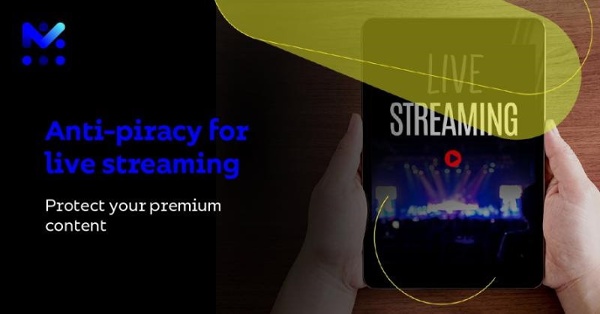We’ve all heard the phrase; you don’t know what you don’t know. This holds true for many things, including what may be happening within your telecommunications network. Online content piracy, the illegal distribution of copyrighted digital media, has been growing. Today, 81% of TV and film piracy occurs via unlicensed web streaming, which violates content licensing agreements. Meanwhile, monitoring and identifying pirated content and taking legal action against offenders can be costly, time-consuming, and arduous.
The streaming of media content became more ubiquitous in the mid-2000s, with the launch of platforms such as Netflix and Hulu. Suddenly, consumers had new, more convenient options to view their favorite movies and TV shows. As the opportunities to stream have grown, so have consumers’ frustrations with paying for multiple online platforms and services, turning piracy into a billion-dollar industry.
According to the U.S. Chamber of Commerce’s Global Innovation Policy Center and NERA Economic Consulting, pirated video gets over 230 billion views a year, with 15 billion of those coming from the U.S. alone. Pirated TV shows are the most popular, with 12.8 billion views in the U.S. and 170.6 billion views coming from outside the U.S.
The impact of online content piracy can take a significant toll on a communications service provider’s (CSPs) service revenues and overall profitability. Nearly 24% of the global internet bandwidth is consumed by illegally uploading and downloading copyrighted materials, according to the U.S. Chamber of Commerce and NERA study report. And by 2022, Statista estimates that globally $51.6 billion in TV and movie revenue will be lost to piracy. Regulators around the world have attempted to address these issues but with limited success. So, what can a CSP do?
Not all streaming boxes and applications are illegal
Many CSPs rely on an approach that verifies content, passing all or part of their internet traffic through DPI servers. While deep packet inspection (DPI) can examine the data passing over the network in detail, it also may make more generalized decisions that don’t distinguish between legal versus illegal use. CSPs who rely on this technique are in danger of penalizing legitimate subscribers. A more granular approach to analysis is required to accurately differentiate between legal and illegal users.
Content piracy detection, disclosure, and dispute resolution
Discovering pirated content, tracking down piracy networks, keeping a step ahead of sophisticated fraudsters, and manually disabling all unlawful streams can take a tremendous amount of time, effort, and resources. However, with today’s more advanced technologies, CSPs can shut the door to this illegal and costly menace once and for all.
CSPs can shore up their approach to online piracy with a comprehensive system that automatically provides consistent protection against online piracy while delivering insights for follow-up actions and visibility into how piracy trends are developing.
By taking a proactive approach and detecting suspicious content on leading search engines through web crawling technology, artificial intelligence (AI), and machine learning algorithms, CSPs can scour the internet and discover real-time data relating to illegal distribution sources.
Content that CSPs need to be on the lookout for include:
- Content piracy advertising data
- Links to illegal content on websites and social media
- Illegal content hosted by hard-to-find cyberlockers and P2P networks
The power of AI and machine learning can be used to automate this discovery process, training deep neural networks to perform image and video recognition and classify illegal streaming videos so CSPs can find more, and react faster, to time-sensitive live content such as sporting events. Contextual analysis via natural language processing (NLP) can also detect specific topics and words that lead to quicker results.
Once an illegal data stream has been detected, analyzed, and validated, case management should be used to pull all of the content piracy facts together into a single location. Analyst teams and legal departments gain tremendous value from an easily accessible and comprehensive view of infringement, enabling them to defend potential legal actions.
As content piracy increases, it is clear that CSPs need to modernize and transform their fraud management and cybersecurity processes. At Mobileum, we have proven that web crawling and machine learning advancements, paired with multi-disciplinary expertise, can deliver the data intelligence and analytics needed to eliminate the insufficient manual processes that hamper the detection and defense against online piracy. Instead, CSPs can concentrate on pursuing new and profitable entertainment business models.
To learn more about how Mobileum can help CSPs provide the comprehensive insights required to detect, defend and defeat online piracy to protect your profitability, contact us.




Let Us Know What You Thought about this Post.
Put your Comment Below.